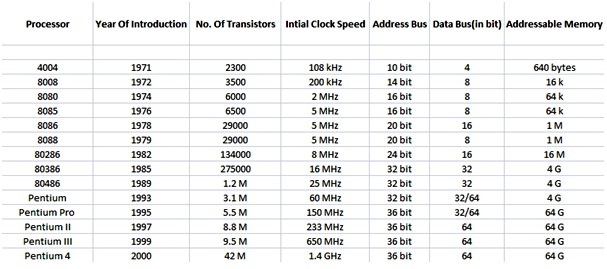Evolution of Microprocessors

Table :- Intel Microprocessors Historical perspective The first Microprocessor (4004) was designed by Intel Corporation which was founded by Moore and Noyce in 1968. In the early years, Intel focused on developing semiconductor memories (DRAMs and EPROMs) for digital computers. In 1969, a Japanese Calculator manufacturer, Busicom approached Intel with a design for a small calculator which need 12 custom chips. Ted Hoff, an Intel Engineer thought that a general purpose logic device could replace the multiple components. This idea led to the development of the first so called microprocessor. So, Microprocessors started with a modest beginning of drivers for calculators. With developments in integration technology Intel was able to integrate the additional chips like 8224 clock generator and the 8228 system controller along with 8080 microprocessor with in a single chip and released the 8 bit microprocessor 8085 in the year 1976. The 8085 microprocessor consiste...